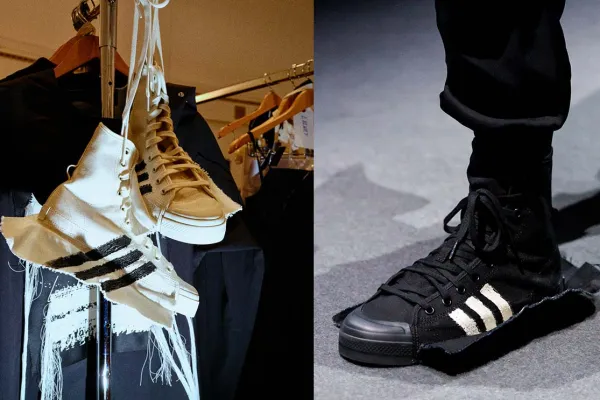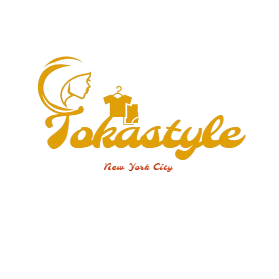When Adidas and Japanese avant-garde designer Yohji Yamamoto joined forces in 2002, they didn’t just create a clothing line—they birthed a movement. The Adidas Y-3 collection, a fusion of sportswear functionality and high-fashion artistry, has spent over two decades redefining what it means to blend performance with aesthetics. As a self-confessed fashion enthusiast who’s tracked this collaboration from its early days, I’ve often pondered: is Y-3 worth the hype—and the hefty price tag? With its Spring/Summer 2025 collection now making waves, it’s time to dive deep into what makes Y-3 a tone-setter in the fashion world and whether it’s a worthy investment for shoppers in 2025.
The Genesis of a Game-Changer
To understand Y-3’s value, we need to start at its roots. Launched in 2002, Y-3 emerged at a time when sportswear and high fashion existed in separate spheres. Adidas, a German titan known for its three stripes and athletic prowess, teamed up with Yohji Yamamoto, a Paris-based designer celebrated for his dark, draped, and deconstructed silhouettes. The name “Y-3” itself tells the story: “Y” for Yamamoto, “3” for Adidas’ iconic stripes, and the hyphen symbolizing their union. Their debut show in Paris was a revelation—boxing boots, oversized jackets, and fluid skirts adorned with those unmistakable stripes, all in a stark palette of black, white, and navy.
This wasn’t just a collaboration; it was a cultural pivot. Y-3 arrived before “athleisure” became a buzzword, predicting a future where gym gear could grace runways and streets alike. Over 23 years, it’s evolved from a radical experiment to a cornerstone of luxury streetwear, influencing everyone from sneakerheads to haute couture aficionados. But does its legacy justify the cost? Let’s break it down through the lenses of design, quality, experience, and impact.
Design: Avant-Garde Meets Athletic
Y-3’s design ethos is its beating heart—and its most polarizing feature. Yamamoto’s fingerprints are everywhere: asymmetrical cuts, oversized proportions, and a monochromatic palette that’s equal parts minimalist and menacing. Unlike Adidas’ mainline, which churns out vibrant, trend-driven pieces, Y-3 reimagines sportswear with a sculptor’s eye. Take the Spring/Summer 2025 collection: lightweight mesh reworked into street-ready layers, quilted Adizero squares fluttering on a column dress, and football-inspired graphics subverted with Yamamoto’s signature twist. It’s sportswear, but not as you know it.
For me, this originality is Y-3’s biggest draw. A pair of Y-3 Kaiwa sneakers I snagged last year—chunky yet sleek, with a futuristic sole—still turn heads, their design defying the fleeting cycles of fast fashion. Compare that to Adidas’ Ultraboost, a performance icon that’s undeniably cool but lacks the same artistic edge. Y-3 doesn’t follow trends; it sets them. The Y-3 Qasa High, a cult favorite from 2013, practically invented the “ninja” aesthetic that dominated mid-2010s streetwear, proving Yamamoto’s knack for staying ahead of the curve.
That said, this boldness isn’t for everyone. If you prefer subtle staples or vibrant pops of color, Y-3’s brooding, experimental vibe might feel alienating. It’s a collection that demands confidence—and a willingness to stand out. For those who crave uniqueness over conformity, though, it’s a goldmine.
Quality: Premium, But Not Perfect
Quality is where Y-3’s premium pricing—often two to three times that of standard Adidas—comes under scrutiny. The collection boasts high-end materials: supple leathers, organic cotton, recycled nylon, and technical fabrics like Primeknit and Boost cushioning. My Y-3 Gazelle sneakers, a reinterpretation of an Adidas classic, feel like a step above—soft leather uppers, suede heel linings, and meticulous stitching that scream craftsmanship. Even the packaging feels luxurious, with embossed boxes and care cards that elevate the unboxing experience.

Yet, there’s a catch: consistency isn’t guaranteed. Online chatter from fellow shoppers echoes my own mixed experiences. A Y-3 Organic Cotton Terry Crew Sweater I own is buttery soft and impeccably cut, holding up after dozens of washes. But a pair of Y-3 shorts I bought last summer showed signs of wear—fading logos and slight pilling—within months. Some argue this variance reflects Yamamoto’s focus on fashion over function; unlike Adidas’ performance gear, Y-3 prioritizes aesthetics, and durability can take a backseat.
Compared to competitors like Nike’s collaborations with Off-White or even Adidas’ own Yeezy line, Y-3 holds its own in material quality but doesn’t always match their longevity. It’s a trade-off: you’re paying for artistry and exclusivity, not indestructibility. For collectors or occasional wearers, this might not matter. For daily drivers, it’s a potential dealbreaker.
Pricing: The Cost of Exclusivity
Let’s talk numbers—because Y-3 isn’t cheap. Sneakers range from $300 to $600, apparel hovers between $150 and $400, and outerwear can climb past $1,000. The Y-3 ADIOS PRO 4 from the latest running collection retails at $400, while a tailored jacket might set you back $800. By contrast, a standard Adidas Ultraboost costs $190, and a sleek jacket from the mainline rarely exceeds $200. Y-3’s premium reflects its designer pedigree, limited production runs, and innovative materials—but is it worth it?
For me, the answer hinges on context. I nabbed my Kaiwas for $250 during a rare sale—a steal for their quality and design—and they’ve felt like a justified splurge. Full price, though? I’d hesitate. The value shines brightest when you catch a deal or prioritize statement pieces over wardrobe workhorses. Posts on X and Reddit suggest a savvy strategy: wait for discounts, as Y-3’s high retail and lower mainstream hype often leave stock lingering for markdowns.
Still, there’s an intangible worth here. Y-3 isn’t just clothing—it’s a status symbol, a slice of fashion history. If that resonates with you, the price might feel less like a burden and more like an investment.
Shopping Experience: Sleek and Selective
Buying Y-3 is an experience unto itself. In-store, Adidas Y-3 boutiques (or select high-end retailers) offer a curated, gallery-like vibe—think sparse racks, moody lighting, and attentive staff. It’s a stark contrast to the chaotic bustle of a typical Adidas outlet. Online, the Adidas site and Y-3.com are slick and intuitive, with detailed product shots and styling inspo that make browsing a pleasure. Returns are straightforward, too, with prepaid labels often included—a perk not always standard in 2025’s retail world.
The catch? Availability. Y-3’s limited runs mean sizes and styles sell out fast, especially for hyped drops like the reissued Qasa High. I’ve missed out on pieces—like a Y-3 bomber from Fall 2024—because I didn’t act quickly. It’s a double-edged sword: exclusivity fuels desire, but it can frustrate casual shoppers. If you’re patient and strategic, though, the hunt adds to the thrill.
Cultural Impact: A Tone-Setter’s Legacy
Y-3’s worth extends beyond the tangible—it’s a cultural touchstone. When it debuted, collaborations between sportswear giants and designers were rare. Y-3 paved the way for Nike x Sacai, Puma x Rihanna, and countless others, proving that athletic roots could bloom into high fashion. Its influence on streetwear is undeniable; the oversized silhouettes, techy fabrics, and monochrome palettes now ubiquitous in urban style owe a debt to Yamamoto’s vision.
In 2025, Y-3 remains relevant. The Spring/Summer collection’s football nods and lightweight techwear tap into current obsessions with sport-inspired fashion and sustainability. Celebrity endorsements—think Brent Faiyaz or Tyshawn Jones sporting Y-3 on Instagram—keep it in the zeitgeist. For younger shoppers, it’s a bridge between Gen Z’s love for bold individuality and Millennials’ nostalgia for early-2000s innovation.
Personal Picks: My Y-3 Highlights
Here’s a snapshot of my Y-3 collection—and why it’s swayed me:
- Y-3 Kaiwa Sneakers ($350) – Chunky yet refined, they’re a conversation starter that’s held up through a year of wear.
- Organic Cotton Terry Crew ($180) – Cozy, stylish, and durable, it’s a layering essential that justifies its cost.
- Y-3 Gazelle ($300) – A luxe twist on a classic, blending comfort with Yamamoto’s flair.
These pieces outshine my Adidas mainline staples in creativity, if not always in practicality.
The Verdict: Worth It for the Right Buyer
So, is Adidas Y-3 worth it? It depends on who you are. If you’re a fashion-forward individual who values originality, exclusivity, and cultural cachet—and can stomach the price or snag a deal—Y-3 is a resounding yes. It’s not just clothing; it’s a statement, a legacy, a tone-setter that continues to push boundaries in 2025. My Kaiwas and crew sweater have earned their keep, enhancing my wardrobe in ways mass-market pieces can’t.
But if you prioritize affordability, durability, or understated versatility, Y-3 might feel like an extravagant leap. It’s not built for everyone—and that’s the point. For those it suits, though, it’s more than worth it—it’s iconic.

As of April 9, 2025, Y-3 stands tall as a pioneer that still resonates. Whether you’re a longtime fan or a curious newbie, the question isn’t just “Is it worth it?”—it’s “Does it speak to you?” For me, it does. What about you?


